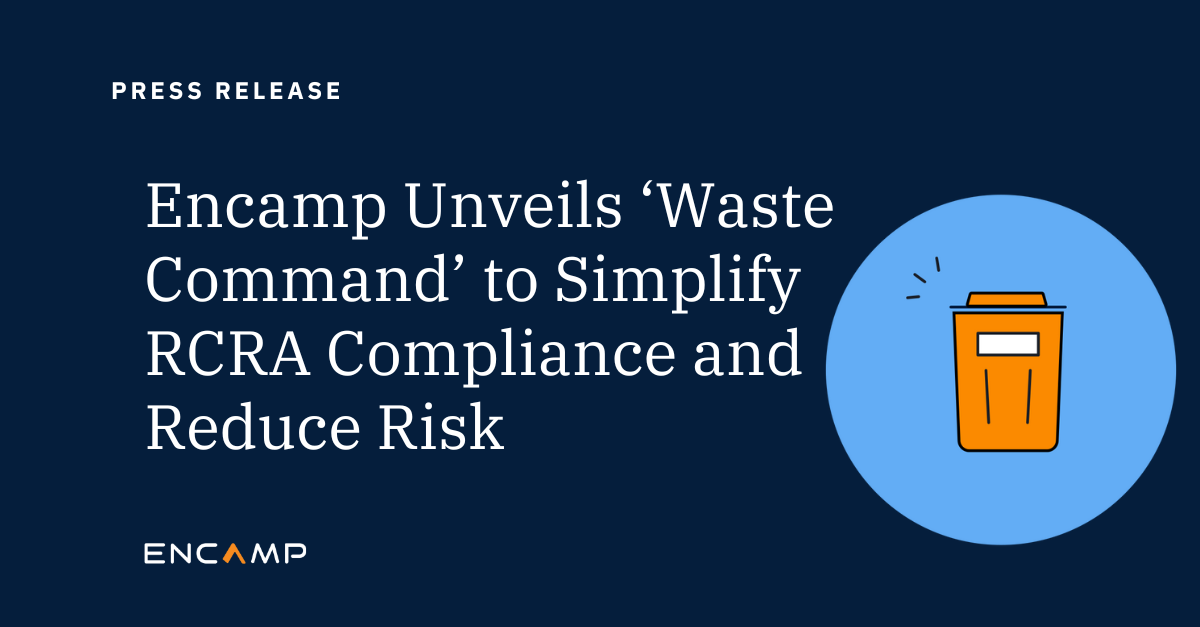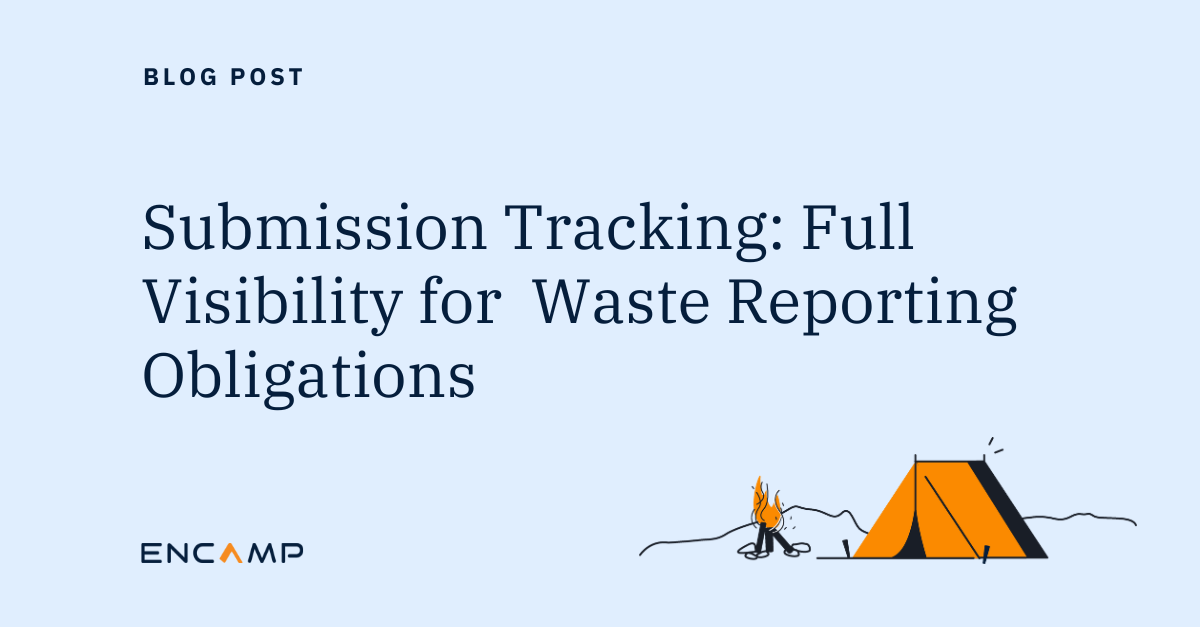Tier II reporting for environmental compliance has always involved a degree of interpretation for EPA and various state regulations. Hazardous chemical inventories are no different.
Along with the basic question of how to inventory chemicals, we’re routinely asked about three other aspects of the hazardous chemical inventory process that don’t always seem clear.
- EHS – What is it? Are there different thresholds?
- What are the thresholds for gasoline/diesel inventories?
- Are any chemicals excluded from inventory requirements?
Of course, regulations and processes for hazardous chemical inventories extend much further than this. But for now, let’s look at these three issues and how they apply to Tier II reporting. For answers, we went directly to EPA’s published instructions for how to complete the Tier II Inventory Form.
Some background first.
Instructions from EPA
Per EPA instructions: Section 312(a) of the Emergency Planning and Community Right-to-Know Act (EPCRA) requires the owner or operator of facilities subject to Section 311 of EPCRA to submit an Emergency and Hazardous Chemical Inventory Form by March 1 of each calendar year. By state and primarily at the county and local levels in each state, this form is submitted to the State Emergency Response Commission (SERC), the Local Emergency Planning Committee (LEPC), and the local fire department.
(Note that all 50 states follow the March 1 deadline except for certain jurisdictions in California. California is divided into Certified Unified Program Agencies, or CUPAs for short. Some CUPAs require hazardous chemical inventory information to be submitted at different times during the year. Also in New Jersey, public and private entities have different due dates.)
Section 312
Section 312 describes two reporting “tiers” — i.e., Tier I and Tier II forms — for providing information on hazardous chemicals at a subject facility. The Tier I form contains general information on all hazardous chemicals stored or handled at a facility. Conversely, the Tier II form contains specific information on hazardous chemicals present at the facility. In this case we’re focused on the Tier II form, which is also often referred to as the EPCRA Tier II form.
Also per EPA, states have the flexibility to implement hazardous chemical inventory reporting requirements as appropriate for the needs of their community. For instance, a state can add chemicals to the inventory list established by the EPA or set lower reporting thresholds. States can also create their own Tier II reporting form (or format) that requests information beyond that required by federal reporting requirements.
As to who must submit a Tier II Inventory Form, the requirement applies to the “owner or operator of any facility that is required under regulations implementing the Occupational Safety and Health Act of 1970.” This means each facility at which a hazardous chemical is present must prepare or have available a Material Safety Data Sheet (MSDS, also known as the Safety Data Sheet, or SDS) at that facility. (See more in our blog, EPCRA Tier II Reporting, A Complete Guide.)
- Common reporting errors… Helpful hint
Some SERCs and LEPCs require a site plan to be submitted with your chemical inventory. This plan helps navigate chemical emergencies by identifying where hazardous chemicals are stored, where the nearest emergency exits are, where the emergency equipment like fire extinguishers and PPE are located, and other pertinent information. Check with your SERC, LEPC, and fire department to see if they have specific requirements for site plans to ensure your facility is in compliance.
How to inventory chemicals
For chemical descriptions on the Tier II Inventory Form, the form lists separate fields for reporting pure chemicals and mixtures. Again per EPA instructions:
Mixtures: There’s a lot of confusion surrounding mixtures and how to report them. Do you report each chemical separately within the mixture? Or should you report the mixture as its own chemical? EPA guidance recommends two methods:
- Report each constituent individually. With this option, the percent weight of each component will need to be converted to pounds by using the mass of the mixture. After each component has been converted, aggregate the amount with any other instances of the same component.
- The other option is reporting the mixture as a whole. If the components are unknown (such as trade secrets), the chemical must be reported as a mixture.
To report mixtures, facilities have the option to report by the component or the mixture itself. However, as stated in the regulations at 40 CFR 370.14(b), the reporting option used must be consistent for both MSDS (SDS) and inventory reporting, unless it is not possible to do so. This means that, if the facility reports on a specific mixture as a whole for MSDS (SDS) reporting under Section 311, then the facility must report on that mixture also as a whole for the Tier II hazardous chemical inventory reporting under Section 312.
- Common reporting errors… Helpful hint
Some facilities forget to factor in short term or seasonal chemicals they use for projects or specialty blends. Section 312 states that you must account for any chemical present at the facility. EPA further describes present as being onsite at any given time during the year above the threshold. So although those chemicals may be onsite for a short amount of time, if they exceed the threshold while at your facility, you’re required to report it.
Pure Chemical:
- On the Tier II Inventory Form, provide the chemical name (or common name of the chemical) as provided on the MSDS (SDS). Enter the Chemical Abstract Service (CAS) registry number.
- Indicate if the chemical is an EHS (see next section). Check the box “yes” or “no.”
- Check box for the appropriate descriptor for the chemical: solid, liquid, or gas.
- If you are withholding the name of the chemical as trade secret, check the box for “trade secret.”
Mixture:
If a hazardous chemical is part of a mixture, you have the option of reporting the entire mixture or only the portion of the mixture that is a particular hazardous chemical (e.g., If a hazardous solution weighs 100 lbs. but is composed of only 5% of a particular hazardous chemical (remainder of the solution is water), you can indicate either 100 lbs. of the mixture or 5 lbs. of the hazardous chemical).
EPA makes this note, too: The option used for each mixture at your facility must be consistent with the option used in your Section 311 reporting.
Now let’s look at thresholds.
EHS – What is it? Are there different thresholds?
In the context of hazardous chemicals and inventories, EHS is the acronym for Extremely Hazardous Substance — not to be confused with the same acronym for Environmental, Health, and Safety.
Designated under EPCRA Section 302, the EHS reporting threshold is 500 pounds (or 227 kg.) or the threshold planning quantity (TPQ), whichever is lower. (EHSs and their TPQs are listed in 40 CFR part 355, Appendix A and Appendix B).
Per EPA Tier II Inventory Form instructions once again: Because EHSs are important to local emergency planning requirements under EPCRA Section 303, EHSs have lower reporting thresholds under EPCRA section 312. The amount of an EHS at a facility (both pure EHSs and EHSs in mixtures) must be aggregated for purposes of threshold determination. It is suggested that the aggregation calculation be done as a first step in determining whether the reporting threshold has been met or exceeded.
Once you determine if a threshold for an EHS has been reached, you may report the mixture or product name as it appears on the MSDS (SDS). You must also report any EHSs present in the mixture.
- Common reporting errors… Helpful hints
One of the most common mistakes is incorrectly designating EHSs or failing to designate a chemical as an EHS. Double check that all of your reported chemicals are not on the EHS list. See the entire list here. Also, some states require additional information about the chemicals or the facility itself. Another common mistake is not answering those questions or answering them incorrectly. Many states require more information regarding EHSs onsite, such as mode of shipment, container type, and container size.
What are the thresholds for gasoline/diesel inventories?
According to EPA regulations (and yet again from the agency’s Tier II Inventory reporting instructions):
For gasoline (all grades combined) at a retail gas station, the threshold level is 75,000 gallons (or approximately 283,900 liters). This threshold level applies if the tank was stored entirely underground and was in compliance at all times during the preceding calendar year with all applicable Tier II Inventory Form Instructions.
For diesel fuel (all grades combined) at a retail gas station, the threshold level is 100,000 gallons (or approximately 378,500 liters). In this case, the threshold level applies if the tank was stored entirely underground and the tank(s) was in compliance at all times during the preceding calendar year with all applicable Underground Storage Tank (UST) requirements.
For all other hazardous chemicals for which facilities are required to have or prepare an MSDS (SDS), the minimum reporting threshold is 10,000 pounds (or 4.540 kg.)
Whether gasoline or diesel inventories, you must report hazardous chemicals that were present at your facility at any one time during the previous calendar year at levels that equal or exceed these thresholds.
There are two notes from EPA in this area:
- A retail gas station means a retail facility engaged in selling gasoline and/or diesel fuel principally to the public for motor vehicle use on land.
- States may have lower reporting thresholds and additional chemicals covered by the state right-to-know regulations.
Are any chemicals excluded from inventory requirements?
The answer here is yes. As EPA inventory instructions say, the Tier II form does not have to be submitted if all chemicals located at a facility are excluded under Section 311(e) of EPCRA. For instance:
- Any food, food additive, color additive, drug, or cosmetic regulated by the Food and Drug Administration (FDA);
- Any substance present as a solid in any manufactured item to the extent exposure to the substance does not occur under normal conditions of use;
- Any substance to the extent it is used for personal, family, or household purposes, or is present in the same form and concentration as a product packaged for distribution and use by the general public;
- Any substance to the extent it is used in a research laboratory or a hospital or other medical facility under the direct supervision of a technically qualified individual; and
- Any substance to the extent it is used in routine agricultural operations or is a fertilizer held for sale by a retailer to the ultimate customer.
EPA Enforcement Alert
In November 2021, EPA issued an Enforcement Alert on the Risks of Improper Storage of Hazardous Chemicals at Chemical Warehouses and Distribution Facilities. Key compliance concerns noted in the Alert include:
- Failure to account for the chemicals in all containers (including aerosol cans, cylinders, storage tanks, etc.) that could be affected by the same emergency event, such as a fire.
- Failure to file and implement an RMP, often because insufficient inventory facility management systems failed to flag that chemical inventories had exceeded regulatory thresholds.
- Failure to submit a Tier II form, Safety Data Sheet (SDS), or TRI Form R, in violation of EPCRA.
Among these latest concerns from EPA, we’ll add that even when Safety Data Sheets are submitted, they’re often out of date and don’t meet OSHA’s modified Hazard Communication Standard (HCS) to conform to the United Nations’ Globally Harmonized System of Classification and Labeling of Chemicals (GHS). This SDS issue is one of the most common Tier II reporting errors we see each year.
Transforming the way enterprises stay in compliance
Encamp is on a mission to create a world where good for business can equal good for the environment. We help enterprises transform compliance programs and human processes into a technology-driven system that lays the foundation for accurate and ongoing environmental compliance through a blended method of intelligent high-tech solutions and high-touch expert support.
Megan Walters
Megan is Encamp’s VP of Compliance & Customer Success and formerly a Senior Environmental Scientist. But she’s also a Certified Environmental and Safety Compliance Officer® (CESCO), an EHSMS Internal Auditor, a Certified Hazardous Materials Manager, eRailSafe certified, a HAZWOPER 40 Hour - Emergency Response Technician, and skilled in RCRA, DOT, and ISO 14001. Obviously, she knows “compliance.”



